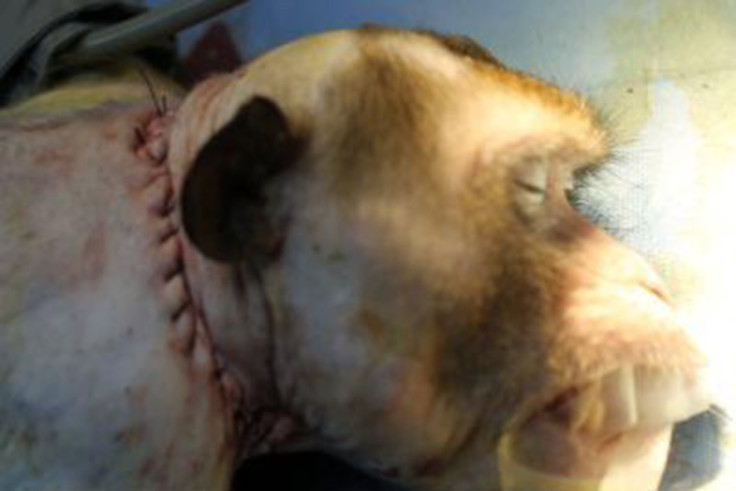Frankenstein science: Maverick Italian surgeon announces 'successful' China monkey head transplant

A monkey head transplant has been performed in China, Italian neurosurgeon Sergio Canavero has claimed. Images released appear to show a head stitched onto another body, and researchers say the monkey survived the procedure without neurological damage, adding it was kept alive for 20 hours following the operation – for ethical reasons.
The surgery was led by Xiaoping Ren at Harbin Medical University, China. The team connected the blood supply between the head and the body, but they did not try to connect the spinal cord, New Scientist reports.
Canavero, who hopes to carry out the world's first head transplant next year, told the magazine the procedure shows if the head is cooled to -15C, the monkey can survive without brain damage. "The monkey fully survived the procedure without any neurological injury of whatever kind," he was quoted as saying.
In a press release sent to Motherboard, Canavero said: "A full monkey head transplant has been successfully accomplished by Prof Ren's group in China with the goal of testing cross-circulation and hypothermia as an effective neuroprotective strategy. The first studies on human cadavers have already begun in China and will be expanded shortly."

Ren announced his plans to carry out head transplants on monkeys last year, having reportedly carried out 1,000 operations on mice. He said they had carried out head transplants on a couple of monkeys in 2015.
The Italian neurosurgeon added he and researchers from China and South Korea have carried out a series of experiments that will be published in seven papers over the coming months – but this could not be verified.
Other experiments carried out involve experimenting on human cadavers and mice. In video footage, mice apparently having had their necks severed then re-fused are seen sniffing and moving their legs. This experiment was carried out by C-Yoon Kim from the Konkuk University School of Medicine in South Korea. He said that the mice could recover motor function, suggesting "it is possible to reconnect the [spinal] cord after complete severance".
Canavero says the mice experiment shows the spinal cord can be refused if the cut is clean and polyethylene glycol (PEG), a chemical that preserves nerve cell membranes, is used. "These experiments prove once and for all that simply using PEG, you can see partial recovery," he says.
"It's important that people stop thinking this is impossible," he added. "This is absolutely possible and we're working towards it."
However, the announcement has been met with criticism from some in the scientific community. Thomas Cochrane, a neurologist at Harvard Medical School's Centre for Bioethics, told New Scientist releasing research before the studies is "frowned upon for good reason" because it creates a buzz around the work "before excitement is warranted".
"It distracts people from actual work that everyone can agree has a valid foundation," he said. "As far as I can tell, that operation has mostly been about publicity rather than the production of good science."
Arthur Caplan, a bioethicist at New York University School of Medicine, added: "When it gets published in a peer-reviewed journal I'll be interested. I think the rest of it is BS."
© Copyright IBTimes 2025. All rights reserved.






















